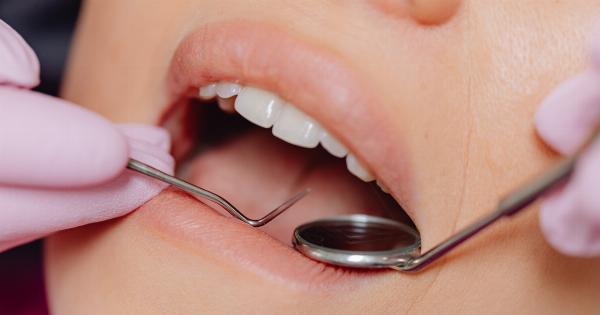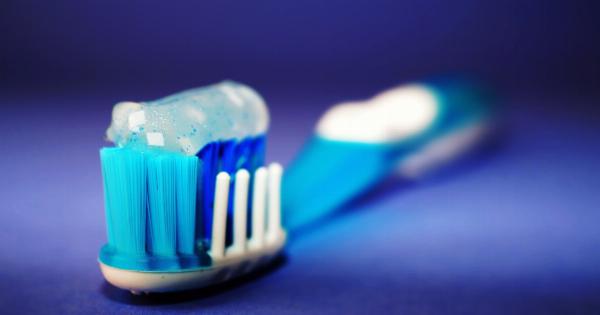Toothache is a common dental problem that can cause significant discomfort and affect daily activities. It occurs when the sensitive nerve endings within the teeth become irritated or inflamed.
There can be several causes for toothache, ranging from dental issues to external factors. Understanding the causes and symptoms of toothache is crucial in managing the pain effectively.
Causes of Toothache
1. Dental Decay: Tooth decay, also known as dental caries, is one of the most common causes of toothache. When plaque and bacteria accumulate on the teeth, they produce acids that erode the tooth enamel, leading to cavities.
These cavities expose the sensitive inner layers of the tooth, causing pain and sensitivity.
2. Dental Infections: Infections can occur in and around the teeth, leading to toothache. Abscessed teeth, which are infected at the root, often cause severe throbbing pain.
Gum infections, such as gingivitis or periodontitis, can also cause toothache as the infection spreads to the surrounding tissues and nerves.
3. Tooth Fractures: Cracked or broken teeth can result from various factors, such as dental trauma, biting down on hard objects, or teeth weakened by dental decay.
These fractures can expose the delicate nerves within the teeth, causing sharp pain and sensitivity.
4. Gum Recession: Receding gums expose the tooth roots, which are highly sensitive to temperature changes and external stimuli. This exposure can lead to tooth sensitivity and eventually cause toothache.
5. Dental Procedures: Some dental procedures, such as tooth extraction, root canal treatment, or dental crown placement, may cause temporary toothache as the surrounding tissues recover from the treatment.
Common Symptoms of Toothache
1. Persistent Pain: Toothache is typically characterized by a continuous, dull, or throbbing pain that radiates from the affected tooth. The intensity of the pain can vary from mild to severe, depending on the underlying cause.
2. Sensitivity to Temperature: Toothache often involves heightened sensitivity to hot or cold foods and beverages. If you experience sharp pain or discomfort upon consuming something hot or cold, it may indicate a dental problem.
3. Pain While Chewing: Toothache can worsen while chewing or biting down on food. This symptom suggests that there may be an issue with the tooth structure or its surrounding tissues.
4. Swelling and Redness: In some cases, toothache may be accompanied by swelling and redness around the affected area. This swelling may be a sign of infection or inflammation within the tooth or gums.
5. Bad Breath or Foul Taste: Toothache caused by infections or dental decay can lead to persistent bad breath or a foul taste in the mouth. This symptom indicates the presence of bacteria or debris caused by the underlying dental problem.
Immediate Relief for Toothache
When experiencing toothache, taking certain steps can provide temporary relief until you can see a dentist:.
1. Rinse with Warm Saltwater: Mix half a teaspoon of salt in eight ounces of warm water and rinse your mouth thoroughly. This can help reduce inflammation and provide temporary pain relief.
2. Use Cold Compresses: Applying a cold compress or an ice pack on the affected area can numb the nerves and reduce swelling, providing temporary relief.
3. Over-the-Counter Pain Relievers: Non-steroidal anti-inflammatory drugs (NSAIDs) like ibuprofen can help alleviate toothache by reducing pain and inflammation. Follow the recommended dosage instructions.
4. Topical Analgesics: Over-the-counter numbing gels or oral analgesics can temporarily numb the affected area and provide relief from toothache.
It is important to note that these remedies only offer temporary relief and do not treat the underlying dental problem causing the toothache. It is essential to seek professional dental care for a proper diagnosis and long-term solution.
When to Seek Professional Dental Care
While immediate relief measures can help manage toothache temporarily, it is crucial to schedule an appointment with a dentist when:.
1. The pain persists for more than a day or increases in intensity.
2. Swelling around the affected tooth or gums worsens.
3. There are signs of infection, such as a fever or a foul taste in the mouth.
4. You experience difficulty opening your mouth, swallowing, or breathing.
5. The toothache is accompanied by trauma or injury to the face or mouth.
Seeking professional dental care promptly ensures an accurate diagnosis and appropriate treatment to alleviate toothache effectively.
Preventing Toothache
Prevention plays a vital role in maintaining good oral health and preventing toothache. Adopt the following practices to minimize the risk of toothache:.
1. Maintain a Consistent Oral Hygiene Routine: Brush your teeth twice daily using fluoride toothpaste, floss regularly, and use mouthwash to remove plaque and bacteria from your teeth and gumline.
2. Visit Your Dentist Regularly: Schedule regular dental check-ups and cleanings to identify and address dental issues before they progress into toothache or more severe problems.
3. Eat a Balanced Diet: Limit your consumption of sugary foods and drinks, as they contribute to tooth decay. Instead, opt for a balanced diet rich in fruits, vegetables, and whole grains.
4. Use Protective Gear: If you play contact sports or engage in activities that carry a risk of dental trauma, wear a mouthguard to protect your teeth from injury.
5. Avoid Bad Dental Habits: Refrain from chewing on hard objects, using tobacco products, or grinding/clenching your teeth, as these habits can contribute to tooth fractures and other dental issues.
Professional Treatment for Toothache
When experiencing toothache, it is essential to consult a dentist for a proper diagnosis and treatment. The specific treatment will depend on the underlying cause of the toothache:.
1. Dental Fillings: If dental decay or cavities are causing the toothache, the dentist may need to remove the decayed portion and fill the cavity with a dental filling material.
2. Root Canal Therapy: When the tooth pulp becomes infected or inflamed, a root canal procedure may be necessary. The dentist removes the infected pulp, disinfects the root canal system, and seals it to prevent further infection.
3. Extraction: In severe cases where the tooth cannot be saved, the dentist may need to extract the affected tooth. Extraction is typically the last resort when all other treatment options are deemed ineffective or unsuitable.
4. Antibiotics: If the toothache is caused by a dental infection, the dentist may prescribe antibiotics to eliminate the infection and reduce inflammation.
5. Gum Treatment: If gum disease is contributing to the toothache, the dentist may recommend scaling and root planing to remove plaque and tartar buildup and reduce gum inflammation.
Remember, professional dental treatment is necessary to address the root cause of toothache and prevent further complications.



























